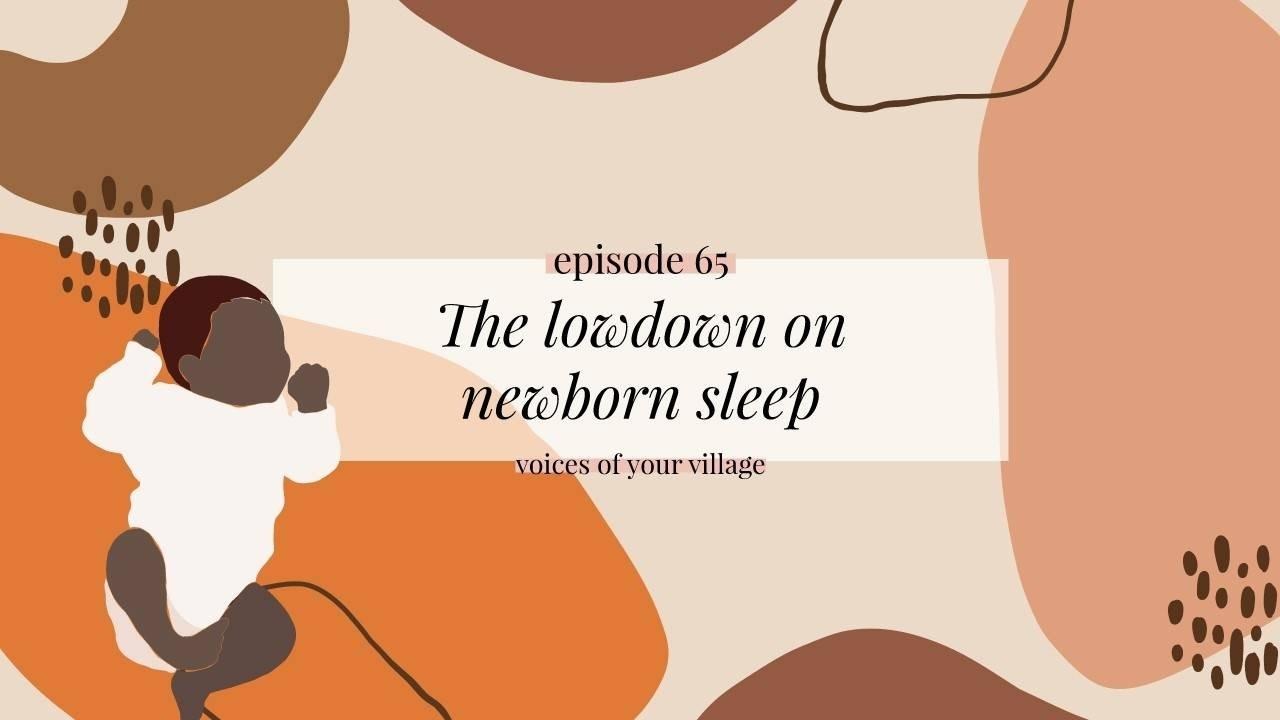The lowdown on newborn sleep

In this week’s episode, I was jazzed to chat with our sleep consultant, Rachel Lounder, all about newborn sleep. Newborn sleep is vastly different than sleep after 4 months of age and Rachel and I dove into the details of how to best support your newborn and maintain your own sanity.
From birth to four months, Rachel shares that the name of the game is keeping periods of wakefulness short. This prevents too much sleep pressure from building. Too much sleep pressure results in an overtired and overstimulated babe who has an even harder time falling asleep. In newborns, the length of naps can vary widely and that’s okay. The length of naps is not as important and keeping periods of wakefulness short.
So what does that actually look like? Typically, you should try to facilitate sleep every 90 minutes or so. Sometimes it might be only 45 minutes of awake time. Two hours is the absolute maximum amount of awake time for a newborn. Any longer than that and they are very likely to be overtired. Rachel shared that nighttime sleep for newborns is variable, but in general, wakeups will happen every 2-3 hours. We talked about the importance of remembering that although the sleep deprivation is really challenging, it is a finite period of time, and around 4 months of age you can work towards a longer nighttime stretch. At that point, a baby’s brain starts to produce melatonin and with the implementation of strategy, you can look forward to a 4-6 hour stretch at the start of the night.
We dove into how breastfeeding and nighttime sleep stretches impact each other. If your baby is doing a longer stretch at night, sometimes that means you may need to add an additional milk removal during the day to help keep your supply robust. You may also initially experience engorgement in the night as you are sleeping longer stretches. Rachel shares that hand expression can be a good way to keep yourself comfortable without the stimulating effect of a pump.
Rachel and I also covered different sleep locations. Cribs, bassinets, play yards, the options are almost endless. What’s important is that it is a firm sleep surface and for newborns, no loose blankets or toys. We talked about the statistics associated with SIDS and the statistical safety of belly sleep. Belly sleep can help combat a baby’s startle reflex and facilitate longer stretches of sleep. To create a safe space for belly sleep, baby must be on a firm surface, not swaddled, no blankets (a sleep sack would be okay), and no toys. Pacifiers are also a great tool for newborn sleep in general and help reduce the rate of SIDS. For babies who are sleeping on their backs, swaddles are a great tool. They also help combat the startle reflex and give babies that tight, held feeling that mimics the feeling of the womb.
We also dove into bedsharing. Bedsharing is another sleep situation that can be totally safe with the right set up. The mattress should be firm, and no blankets above the waist level of the parents. The baby ideally should be between the edge of the bed (with some type of barrier preventing any falls) and the birthing parent, rather than between parents. There is also some compelling research by Dr. James McKenna that Rachel referenced that highlights the safety of bedsharing.
There tends to be a culture of “all or nothing” in parenting, that Rachel cautions against. This can be especially prevalent around breastfeeding. Rachel and I talked about combo feeding, pumping and bottle feeding, and how to protect your mental health when facing feeding or sleep challenges. Breastfeeding can feel very consuming in the early days, to the detriment of a parent’s mental health. Rachel wrote a blog post on her experience with breastfeeding challenges the first time around and she plans to give herself a lot of grace with baby #2 and be more flexible.
We wrapped up our chat by emphasizing the importance of flexibility, realistic expectations, having grace for yourself, and tapping in your village. Joining the Seed Facebook groups is one easy way to tap into your village and get support as you navigate the early days. If you need more help, the sleep course or a consult are also options. The early days are hard but they are temporary!
Rachel Facebook: https://www.facebook.com/rachel.stuart.5836
Rachel IG: https://www.instagram.com/rachel.lounder/
Breastfeeding challenges blog post: https://seedandsew.org/tonguetie/?fbclid=IwAR2eBX18n9g3nN9QgDJzIXG21A69O3QAzk6eMidVnBGb1aljazMJzkCZAkk
James McKenna: https://cosleeping.nd.edu/safe-co-sleeping-guidelines/
